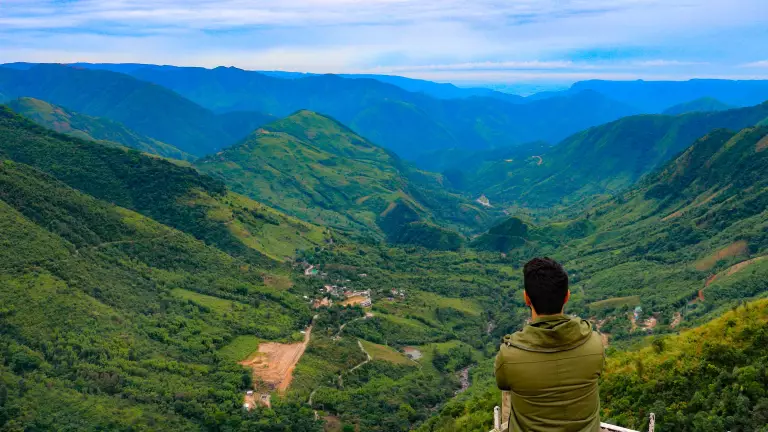Billions of dollars have been mobilized to advance the Sustainable Development Goals—but it’s not news that we need trillions. Estimates put the gap at $3.9 trillion annually. More than mobilizing the capital, we need to put it to work with speed and impact.
That will require creativity and collective resolve across the entire financial ecosystem—from philanthropists to institutional investors, from donor agencies to multilateral development banks (MDBs). And it’s possible.
At the risk of oversimplifying, there are three critical areas for action. First, we must expand the use of blended finance models to attract and mobilize private capital. Second, players across the investment ecosystem need to get creative, trying new approaches for accelerating investments. And third, the international financial community must address the high levels of debt facing many developing countries.
Expand Blended Finance
The private sector is the single largest source of capital for advancing the SDGs. But capital from institutional investors, such as pension funds and sovereign wealth funds, is stymied by the real and perceived risks associated with projects in emerging markets and developing economies. Official sources of finance from the MDBs and other development finance institutions (DFIs) can help mitigate these risks and unlock significantly larger flows.
Blended finance is a powerful means of sparking more private-sector investment. Under such arrangements, capital from public sources is invested alongside private capital, with the former serving as a catalyst by lowering risks, lowering costs, and bringing confidence to specific opportunities. Philanthropic capital can play a similar role in absorbing risks and lowering costs—and thus helping to mobilize private capital.
Blended finance is a powerful means of sparking more private-sector investment.
We need more catalytic capital. Fortunately, there are many ways to make that happen. Philanthropies can step up to take first-loss positions. DFIs, such as the International Finance Corporation, can invite even more private capital into their transactions, thereby expanding the pie and mitigating the perceived political risks of good deals. They could even consider syndicating loans to private and institutional investors.
Expanding the provision and scale of political risk insurance from the US International Development Finance Corporation or the Multilateral Investment Guarantee Association could further bolster confidence and significantly scale up the mobilization of private capital.
To make this happen, these institutions must not only shift financial models; they must also shift mindsets. That means revamping delivery models, internal incentives, and processes.
Get Creative
Ramping up proven investment approaches won’t be enough, however. The global investment community must also explore completely new ways to accelerate the flow of capital.
There are signs this is beginning to happen. The UN Secretary General, for example, has called for a $500 billion annual “SDG Stimulus.” Part of the proposal advocates for using Special Drawing Rights (SDRs), an international reserve issued by the International Monetary Fund. In 2021, approximately $650 billion in SDRs were issued by the IMF, of which just $40 billion or so “belong” to developing economies. The vast majority is held in the reserve accounts of advanced economies.
These reserves may be channeled to MDBs working to drive progress on the Sustainable Development Goals. Presently, efforts are underway at the African Development Bank to make such a channeling of SDRs work. That would provide a major boost to financial capacity and capital for the development agenda across the continent. Making this a reality, however, requires resolve and political will among the world’s large economies.
The global investment community must explore new ways to accelerate the flow of capital.
Local currency financing is another critical area that’s ripe for creativity. It’s more and more challenging for countries to borrow in dollars, euros, or yuan, despite generating income in their local currencies. Developing new foreign exchange mechanisms that would smooth risks and enable local currency lending will prove instrumental.
Address Debt in the Developing World
Many countries in the developing world are grappling with unsustainable levels of public debt. This limits their ability to invest in the SDGs using domestic resources and curtails their ability to take on new debt, even from concessional sources.
In 2020, many highly indebted countries grappling with the global pandemic benefitted from the G20’s Debt Service Suspension Initiative, which provided a financial lifeline and represented an important example of global collective action. The G20’s Common Framework for Debt Treatments, which followed the debt suspension initiative, now needs to be reworked to incorporate all forms of debt, including all official and private debtors. This will be an unparalleled unlock for financing to flow to emerging markets.
Unless we tackle the challenges of debt distress, we will not be able to free up fiscal space for investment in the SDGs and additional climate initiatives.
The Sustainable Development Goals set out a vision of a sustainable and equitable world. If we are to come close to achieving those goals, we need to bring new energy and creativity to unleashing the necessary capital. This will be possible only if we take collective action that leverages partnerships between the Global North and the Global South and between public institutions and private enterprises. It must go beyond traditional profit motives to aim for real progress and true global impact.






